Intertidal
By John Palka — Posted September 2, 2017
For generations the ocean has exercised a magnetic pull on people. Who, living within easy reach of the seashore, has not sought to visit there frequently, whether to bathe, lounge in the sun, thrill to a storm, or just walk quietly and let the sound of the waves soothe the restless mind?
The seashore is a highly diverse place. Some stretches are sandy and some pebbly, some are rocky, and still others are formed by massive rocky bluffs eroded by the unceasing action of the waves into fantastical shapes. Each stretch is home to its own constellation of living creatures.
Among the richest and most diverse stretches of coast in the world are the cliffs, coves and sea stacks of western North America. Let’s visit two of them in the coastal wilderness stretch of Olympic National Park, Rialto Beach and Shi-Shi Beach (pronounced shy-shy). Rialto Beach, on the edge of the Quileute Reservation, can be reached by car, Shi-Shi requires a hike of two miles through the Makah Reservation and a scramble down a steep cliff just inside the park boundary.
The southern end of Shi-Shi is formed by the Point of the Arches, one the region’s most extensive sets of sea stacks stretching far out into the Pacific.
The northern end of Rialto is a rocky promontory pierced by a passage eroded by the ocean waves, the Hole-in-the-Wall.
At high tide the Hole-in-the-Wall is flooded and the sea stacks of the Point of the Arches are inaccessible except by treacherous wading, but at low tide you can walk through the Hole and venture far out among the stacks of the Arches. All around are rock walls that earlier were covered by the restless ocean, and at your feet are tide pools teeming with life.
Between high and low tide is the intertidal zone, home to a captivating diversity of organisms, many easily observed by the attentive eye. We will meet a handful of them here: barnacles, mussels, sea anemones, seaweeds, crabs, and finally sea stars, the keystone members of the entire intertidal ecosystem.
BARNACLES AND MUSSELS
Hard surfaces to which to attach and thus be secured against the surging waters are at a premium, so it is common to see organisms attaching themselves not only to rocks but also to each other. Look.
Here is a carpet of acorn barnacles (lighter Balanus glandula intermixed with darker Chthamalus dalli) densely covering some exposed rocks at the Point of the Arches and leaving hardly any space for other creatures to grow.
And here are acorn barnacles not only covering the rocky surface but also encrusting the California mussels (Mytilus californianus) that got to the rocks first.
A number of different species of barnacles inhabit the intertidal. Among them are gooseneck barnacles (Pollicipes polymerus), whose bodies are elevated on stalks above the surface to which they attach.
They are much larger than the ever-present acorn barnacles that surround them in this picture. The purplish snails are black tegulas (Tegula funebralis).
SEA ANEMONES
Among the most spectacular creatures found in the rocky intertidal are the giant green sea anemones (Anthopleura xanthogrammica). Here we find a cluster of them in a tide pool in the Hole-in-the-Wall.
We usually associate the color green with photosynthetic plants, so why are these sea anemones so brilliantly colored? It is because their tissues are inhabited by unicellular green algae that otherwise form a component of the plankton floating near the ocean’s surface. The algae find a protected home in the anemone and in turn provide their host with some of the sugar they form by photosynthesis. This is an example of the widespread phenomenon of symbiosis, living together (sym– for together and bio– for life).
Another sea anemone in these waters exhibits symbiosis, the aggregating anemone (Anthopleura elegantissima). It is called aggregating because it can multiply by budding, producing new individuals by pinching them off an existing body. These new individuals stay in the immediate vicinity of the original and can form dense aggregates, as in this case.
These individuals are closed up because the tide has retreated. Here are others that are expanded.
The pink tips of the tentacles are characteristic of the species. So is the greenish color. Like the giant green anemone, the aggregating anemone hosts algae in its tissues. The exact color it exhibits depends on which species of algae colonize it, whether green or brown or a mixture.
When aggregating anemones multiply by budding, all the individuals that stem from a single precursor share the same genes. In effect they are like a single organism, except that they have become physically separated. Such a population is called a clone. Clones stemming from different precursor individuals exhibit slight genetic differences from one another. Amazingly enough, when different clones come into contact, they recognize that they are different and they not only compete for space but actually attack each other with specialized tentacles! Such recognition of self vs. nonself is reminiscent of the way our own immune system works.
SEA WEEDS
On the rocks and in the tide pools there is an array of sea weeds—algae in shades of green, olive, red, and pink, each with its own highly developed way of capturing the light of the sun to carry out photosynthesis while avoiding having its molecules broken apart by that same powerful solar energy.
The rosy pink here belongs to coralline algae, a group whose blades are gritty because they incorporate large amounts of calcium carbonate. In the picture of green sea anemones above you can see another form of pink coralline algae, this one not leafy but encrusting the rock. Biologists consider the leafy and encrusting forms to be closely related.
Above and below the pink coralline alga is rockweed (Fucus distichus, sometimes also designated Fucus gardneri). This comes in a range of colors from olive to yellowish. The swollen tips are reproductive structures from which eggs and sperm are shed in relation to the coming and going of the tide. When the tide goes out, the bladders of female individuals release their eggs and the bladders of males release their sperm into the relatively still water of tide pools. This prevents the gametes from being swept away by the turbulent waters of high tide. It’s a good evolutionary adaptation—the fertilization rate of rockweed is upward of 80%.
CRABS
Tossed up on the sand at the high tide line are abundant remnants of Dungeness crabs (Cancer magister). At first glance they look dead, as if some catastrophe had overtaken a whole population. But if you look more carefully you will see that these are actually empty shells abandoned by their owners.
The outside of a crab (or an insect or a spider) is hard. It is called an exoskeleton, an external skeleton. Such a skeleton is valuable for protection, and the elastic, hinged joints allow the animal to move about. The exoskeleton, however, prevents growth. To grow bigger, an animal such as a crab has to form a new exoskeleton within the old one. While this new layer is still soft and pliable, the crab takes in sea water. The pressure that this generates exerts a force on the old, hard exoskeleton which separates along pre-formed suture lines. The crab carefully pulls itself out and waits until its new, larger exoskeleton hardens and once again serves to protect it and allow it to move about. The shed exoskeleton is called a molt. The picture above shows the two portions of a molt, top (carapace) and bottom. Imagine pulling your legs out of this complex structure, right out from the tips of the claws! You can see a time-lapse video of this process here. The grayish, frilly masses inside the lower portion are the crab’s gills, which are also part of the exoskeleton. Yes, like fish, crabs also have gills, expanded surfaces through which they take in oxygen that is dissolved in the water and pass out carbon dioxide that they form during metabolism.
SEA STARS
Finally, the sea stars. This is the most important photograph in this post.
Sea stars (in this case the ochre sea star, Pisaster ochraceus) are prominent denizens of the intertidal. Despite their sedentary appearance they are voracious predators, feeding on many of the species that colonize the rocky surfaces. Most of all they prefer mussels. The sea stars’ predatory behavior is such an important determinant of the whole ecology of the rocky intertidal that the term keystone species was originally coined for them. The extraordinary ecologist Robert T. (Bob) Paine, one of my most distinguished and best loved colleagues at the University of Washington, showed by experiments conducted in the 1960s that when sea stars are removed from a patch of intertidal rocks, the rest of the ecosystem reorganizes. The mussels are no longer removed, competitive interactions among other organisms are substantially modified, and the ecosystem is progressively simplified until mussels dominate. Sea stars exert a far greater effect on the ecosystem than do any other species in the rocky intertidal, hence the term keystone species. This has turned out to be a concept applicable to many ecosystems.
Now why do I call this the most important photograph in this post? In 2013, sea star populations up and down the entire Pacific coast of North America were hit by a devastating disease called sea star wasting disease, evidently caused by a virus. The symptoms were grotesque. The tissues of the stars turned pale and slimy, and in a short time simply disintegrated. In a great many locations sea star populations plummeted essentially to zero. When we visited the wilderness beaches of the Olympic Peninsula, where we had previously seen hundreds of sea stars we now found not a single one.
It was not at all clear whether sea star populations would ever be able to recover from this disaster. This year, however, at both Rialto Beach and Shi-Shi Beach we once again saw sea stars. This is what the photograph documents. They were not nearly as abundant as they once had been, but they were there! Some were still quite small, but others had reached nearly full size and may already have been capable of reproduction. There were several species in addition to Pisaster ochraceus. Partial recovery has also been seen in other locations, not only in Washington but also in Oregon and California. Perhaps the magnificent sea stars will come back after all and resume their role as the keystone species of the Pacific rocky intertidal.
PONDERING WHAT WE HAVE SEEN
In this post we have only introduced a handful of the prominent members of the intertidal community, and we primarily focused on their names plus a story or two. We have not asked, What do they feed on? How do they do this? We have not asked, How do the ones that are firmly attached to rocky surfaces spread from one location to another? We have not asked, What factors determine where particular species will be found? We have not asked, How are these immensely diverse organisms classified—who is related to whom and why do we say that? There are myriad questions that spring to mind as we marvel at the life that is spread out before us in the intertidal.
So, we must come back for other visits! In the meantime, as you walk on the beach pay attention and be inquisitive. Ask your own questions. You can usually find at least initial answers by judiciously searching the internet, but unless your imagination creates the questions you won’t know what to look for!
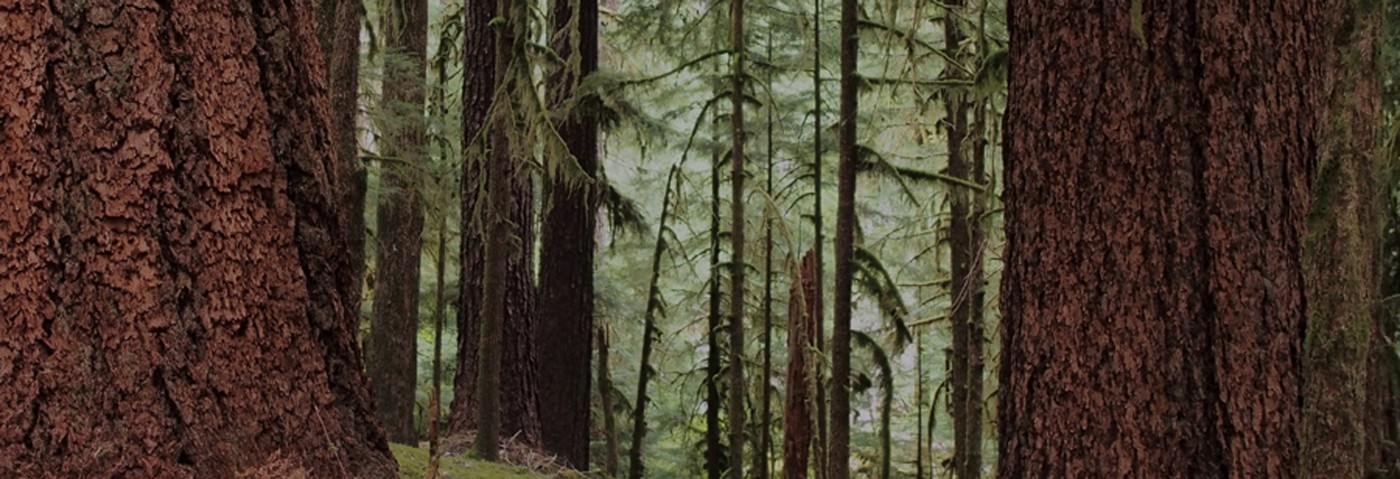

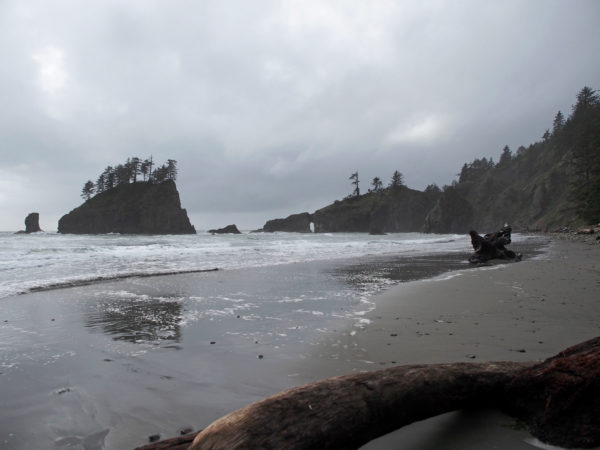
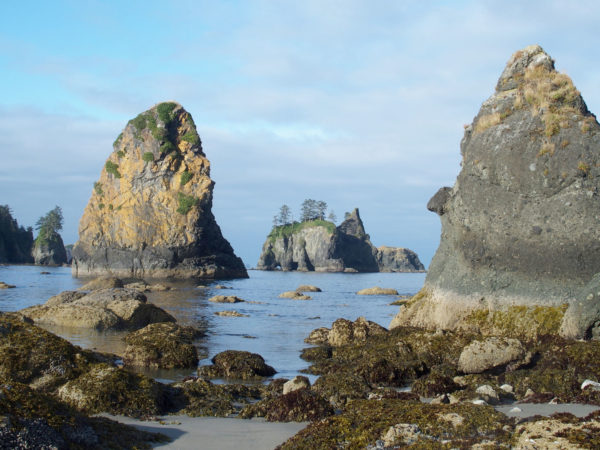
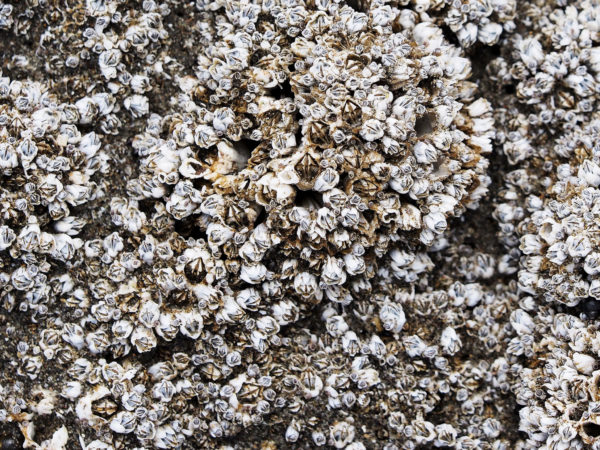
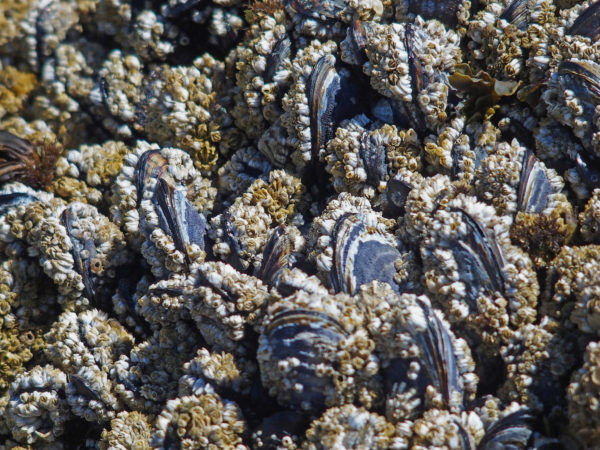
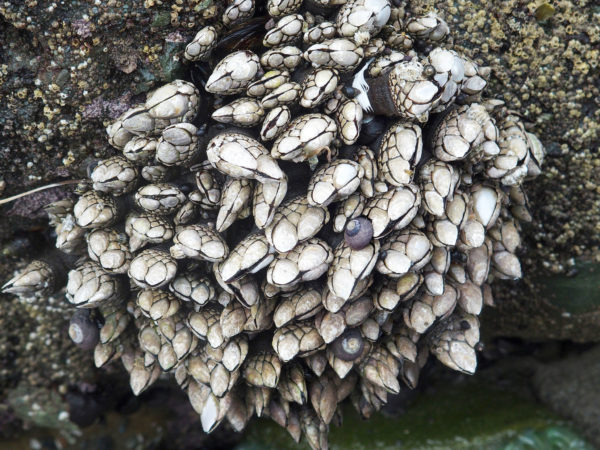
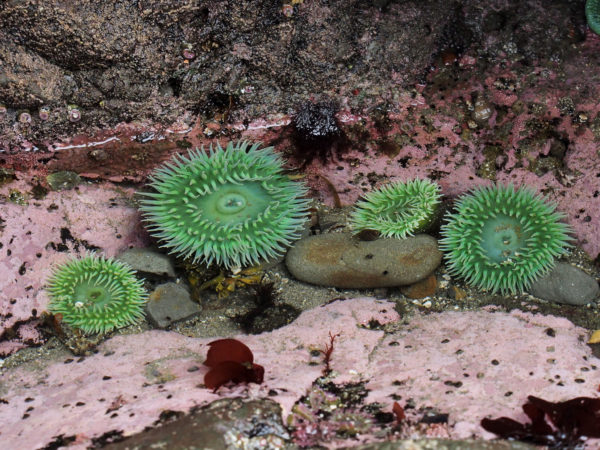
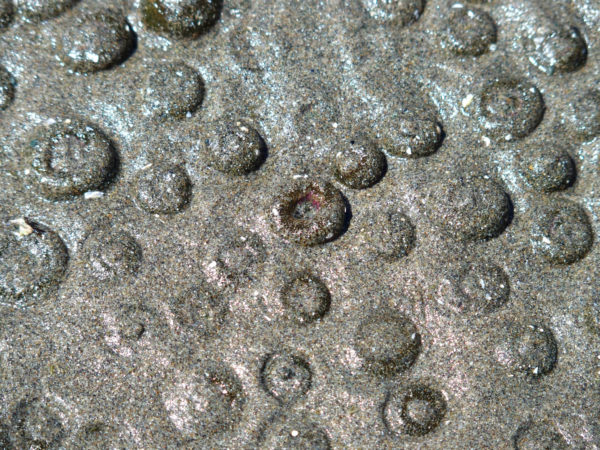

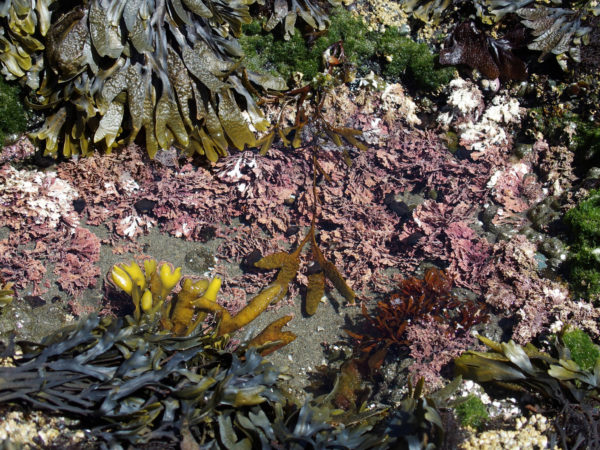
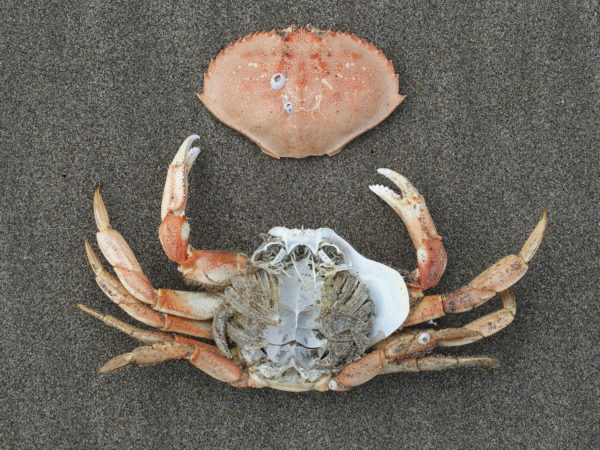
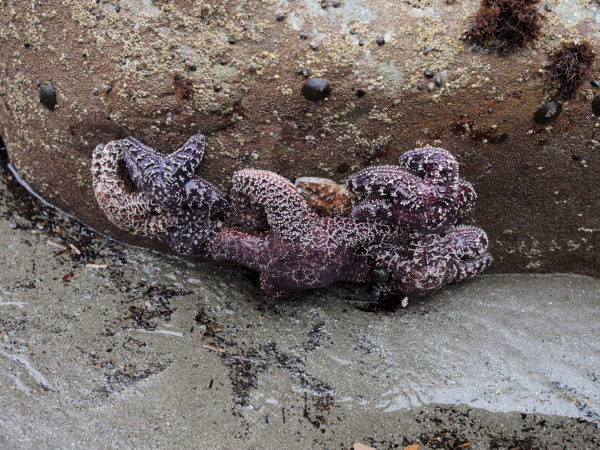
Wonderful, Johnny! Thank you!
Don’t you love those wilderness beaches?!
Fabulous as always Johnny..!! My first exposure to the intertidal was nearly 50 years ago at Point Reyes… …a delightful experience – but so limited.
Your exposition offers the usual thorough and captivating expansion– thanks much..!!
Thanks, Marty.
Thank you for your essays Johnny. I always enjoy reading them – appreciating your writing, explanations, links to more information, the memories they recall, the thoughts and questions they inspire.
Thank you for your wonderful words, Karen. They make my heart go pitter-patter!
Great Article! What about horseshoe crabs? Thanks!
Glad you like it! American horseshoe crabs (Limulus polyphemus, not really crabs but relatives of spiders and scorpions) are only found along the Atlantic Coast. Other species occur off the coast of Asia. Here’s a link you may find of interest: https://www.nwf.org/Wildlife/Wildlife-Library/Invertebrates/Horseshoe-Crab.aspx
One of your best, Johnny–I hope that you’re going to publish these essays in some way!
Thanks, Sue! Yes, I have long thought of some sort of publication, and several people have been suggesting it lately. We’ll see where it all goes once we move to Minnesota.
Wonderful. Can’t wait to get back to the Olympic coast! What about chitons? They have always been a mystery to me, it is not apparent how they feed. Like a barnacle with no mouth.
Chitons are molluscs and, like snails, have a rasping tongue called a radula. The internet has lots of information on chitons. This link might be a fun place to start:http://www.molluscs.at/polyplacophora/index.html?/polyplacophora/main.html
Thank you Johnny! My daughters grew up with the sea stars in Olympic National Park. Some of our favorite memories were the early morning walks to the tidal pools. Thank you for bringing the sweet news of their return! Ever grateful for your eyes…
Isn’t it wonderful to enjoy these wonders as a family? We now have three generations going together, especially to Shi-Shi. Our grandkids, all of them in, or already out of, college and scattered around the country come back here just to camp and be together on the wilderness beach. Nowadays they’re even bringing their boyfriends and girlfriends. My role is to give natural history lessons!